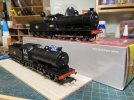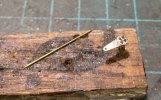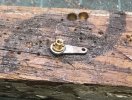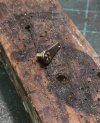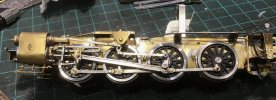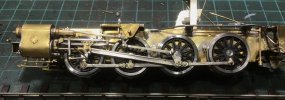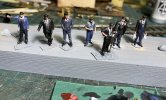Thanks Si — though to be honest it is just a question of following the instructions, which are mostly helpful, and doing one thing at a time. Ah yes, time. It pays not to hurry with Dave’s kits, but they do go together sweetly. You’ve made a great job of the Consett A class kit, and I wouldn’t rule out a Bradwell kit.
So the instructions are mostly good, but they don’t explain how to fit the reverser rod castings to the footplate. I don’t possess an RSU so this was going to be tricky. I decided to drill the bottom 0.6 mm and solder in a short length of brass rod. Each bearing also has a short length of 0.9 mm rod soldered in, and those locate in a length of tube that represents the reversing rod. I then drilled a couple of 0.6 mm holes in the footplate to locate the bearing pegs — hopefully visible in the pic.
View attachment 173319
The bearings were then soldered from underneath, thankfully without any untoward disintegration. I have also assembled the reach rod, which appears to be about the right length (phew), though just propped in place here for the moment.
View attachment 173320
There’s some big jobs looming. I’m still putting off fitting the valve gear. It is all made, forked joints and all, but awaiting the happy conjunction of a lengthy block of uninterruptable time and the right mood. And probably a stiff drink as well …
Richard
—
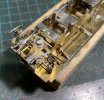
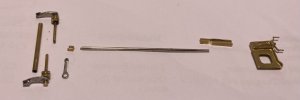
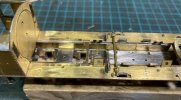




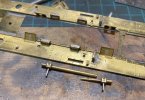
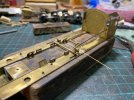
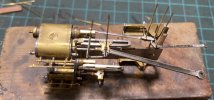
 .
.